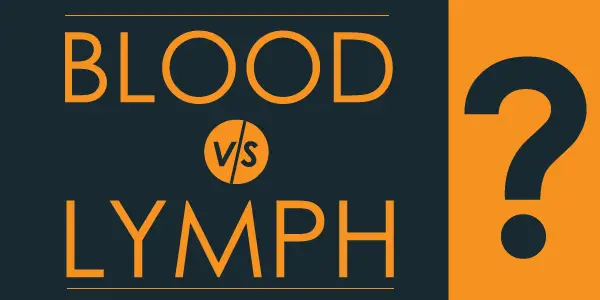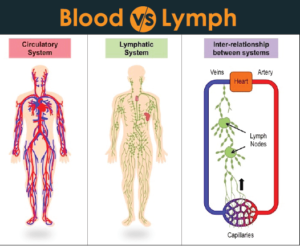
The Difference between Blood and Lymph
The very major difference between Blood and Lymph is that blood has Red-Blood-Cells while Lymph has White-Blood-Cells in it. Furthermore, Blood is red colored fluid and flows through blood vessels while Lymph is white-colored transparent fluid and flows through lymphatic vessels in the body.

just stick with it with having a cup of tea or coffee in Your hand and enjoy reading.
Many of You probably don’t know about the Lymphatic system, so first, come to it to have a better understanding overall.
What is the Lymphatic system?
Do You know there is a sewage system in our bodies to drain out unwanted toxins, wastes, and excess of water? This sewage system is actually a Lymphatic system. As there is a network of the circulatory system with blood vessels in our body, similarly there is a lymphatic system working side with it with millions of lymphatic vessels.
As blood vessels deal with the transportation of the blood, something like that lymphatic vessels deal with the transportation of transparent fluid called lymph across the body to drain.
There are three generic duties of the lymphatic system which are as follows:
- Lymphocytes or WBCs in Lymph help stimulate the immune system of the body which is a defense against infections of the body.
- It works as a one-way drainage system in which fluid from body tissues (wastes) is introduced in it.
- It kicks out all the wastes from the cells outside the body.
Now let’s come to our focused topic which is the difference between blood and lymph.
Difference between Blood and Lymph side-by-side in the table:
| Blood | Lymph | |
| 1.
|
Red-colored fluid | Colorless fluid |
| 2. | It travels in the network of the blood vessels and is part of the circulatory system. | It travels in the network of the lymphatic vessels and is part of the lymphatic system. |
| 3. | It is labored for the carriage of O2, Co2, hormones & waste products to their designated regions. | It is labored for the immune system of the body. |
| 4. | Its overall composition is categorized into WBCs, RBCs, platelets, and plasma. | It is composed of only plasma, platelets, and RBCs but in less amount than blood. |
| 5. | Carries more O2 and nutrients from the digested food. | Carries less O2 & nutrients than blood. |
| 6. | The composition of the plasma in it is divided into phosphorus, proteins, and calcium. | Its plasma is composed the same as blood but with the absence of protein. |
| 7. | Transports nutrients from digested food to whole body tissues which are introduced from the small intestine. | Transports nutrients from tissues back to the blood through lymphatic vessels. |
| 8. | It has high pressure in blood vessels. | It has low pressure in lymphatic vessels. |
| 9. | It possesses more fibrinogen which is a clotting factor. | It possesses low fibrinogen than blood. |
| 10. | Clots quickly due to more fibrinogen resides in it. | Clots slowly due to the lesser amount of clotting factor (fibrinogen) in it. |
| 11. | It travels in circulatory order. | It uses a one-way directional movement |
also read: The difference between cell and tissue